You’ve heard about it. This acroyoga thing. You may even have seen it in a park somewhere. You thought it looked interesting, but it also looked a bit intimidating (in many ways). And what exactly is it that they are doing? Now you have found your way to akro.dk and are thinking…
Should I try acroyoga?
If you ask me, the answer is
Definitely!
– but I may be a bit biased 😀 😛
Then what is acroyoga?
The short and slightly brisk explanation I often come up with is: Take a bit of yoga. Take a bit of acrobatics. Mix the two. Before you know it, you are hanging upside down.
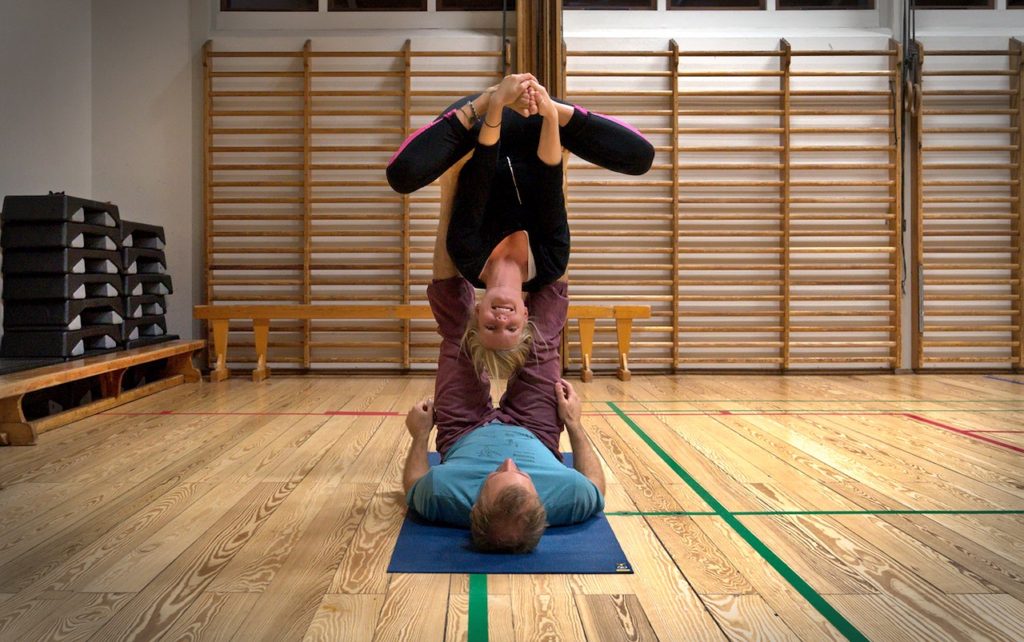
→ Does this mean that you need to practice yoga to practice acroyoga? No, no need for that.
→ Do you need to be strong as a bear and flexible as a cat? No, far from it.
→ So the thing about lying in (multiple) layers on people is a bit outside your comfort zone? No worries. No need to start there. We start slow and you can join and leave as you like.
To define what acroyoga is and to sketch out its boundaries can be challenging. Acroyoga can be a lot of things and does a lot of different things for different people. If you were to ask 10 people what acroyoga is, you would probably end up with 10 different answers1. To me, acroyoga centres on an acrobatic activity with the base lying on the floor. The base can be lying on the back (as shown in the photo above, also known as L-Basing) or on the belly (with the knees bent to get the feet in the air, also known as Belly Basing).
In our day-to-day life, this definition may seem a bit artificial, though, because when I’m playing training practising acroyoga, anything goes. Whether what we are doing is inspired from dance, contact improvisation, natural movement, Danish gymnastics2 or other things, is totally irrelevant, as long as we are having fun. I have friends who hold the view that “everything” is acroyoga. To them, it’s the philosophy behind yoga that’s the important thing. It thus does not matter so much what you are doing, as long as you do it with the yoga mindset3.
Fun and games – and approachable acrobatics
Acroyoga is fun and games. It is not a sport nor is it a competition. There are no other goals than the ones we set for ourselves. We practice acroyoga because it’s fun and it’s a place facilitating our inner child coming out. It is approachable acrobatics. Who haven’t seen Cirque Du Soleil and thought “Wow; this I would never be able to do”? When you are a kid (in Denmark) you are able to go to Danish gymnastics, which have a lot in common with acroyoga4, but for an adult, there are not a lot of possibilities. I only know of AFUK5 in Copenhagen, and to be honest: That one is not approachable for everybody.
Acroyoga is very approachable. Everybody will be able to fly (and base) the Bird pose, which may be the most basic pose in acroyoga. Does it look familiar? I hope so… who has not been up flying on one’s parent’s feet when one was a kid?
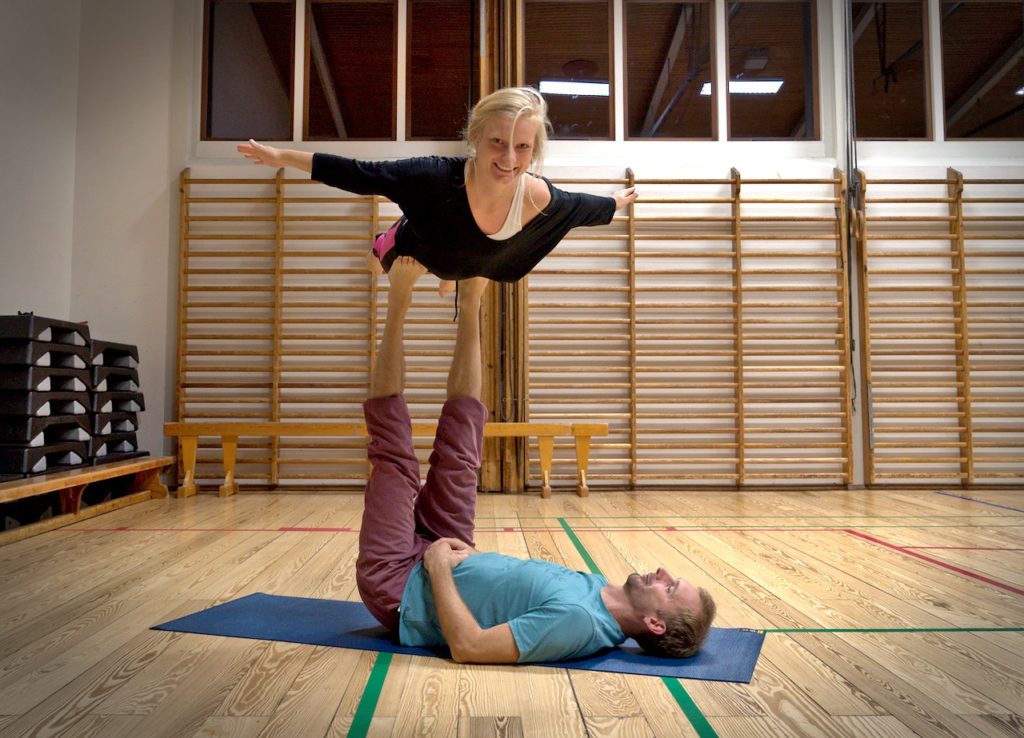
Cooperation, communication, and trust
Acroyoga is a partner activity; it is something we make and create together. A base without a flier – or the other way around – is really not that fun 😉 We depend on each other and on our communication to make things happen and work. At the same time, this is both one of the challenging elements of acroyoga and one that is a source of a lot of joy. When we succeed, it is our common achievement. And when things fail, it is also our common achievement.
And this is where the communication comes into play. Because, how do you best analyse a given situation and make (technical) corrections in a constructive manner? It can be very easy (for both sides) to fall into the trap of “You did it wrong”. Constantly giving your partner feedback on what he/she is doing wrong is not always the best path forward. Typically it often just brings more imbalance and frustration to the partnership. A phrase that I personally is fond of practising is
What can I do to help you…
… and this is where you can put in the change or improvement you would like from your partner. Example:
What can I do to help you straighten your arms a bit more?
This way of stating things opens up the possibility that it’s not my partner (alone) that bears the responsibility for things failing, but that I may be able to change something as well, that will make things easier for us as a team. This facilitates a good partnership, which in turn facilitates trust.
Trust… if we do not trust each other, then we cannot achieve anything: Our natural defence mechanisms kick ind, we curl up and we try to protect ourselves. We look for the ground and we do not get up in the air (flying). In the same manner (but differently) when we feel that our partner trusts us, we, in turn, trust our partner. We sense in and through our bodies that this thing we are working on, is actually within reach. Acroyoga is a great tool for building trust between people.
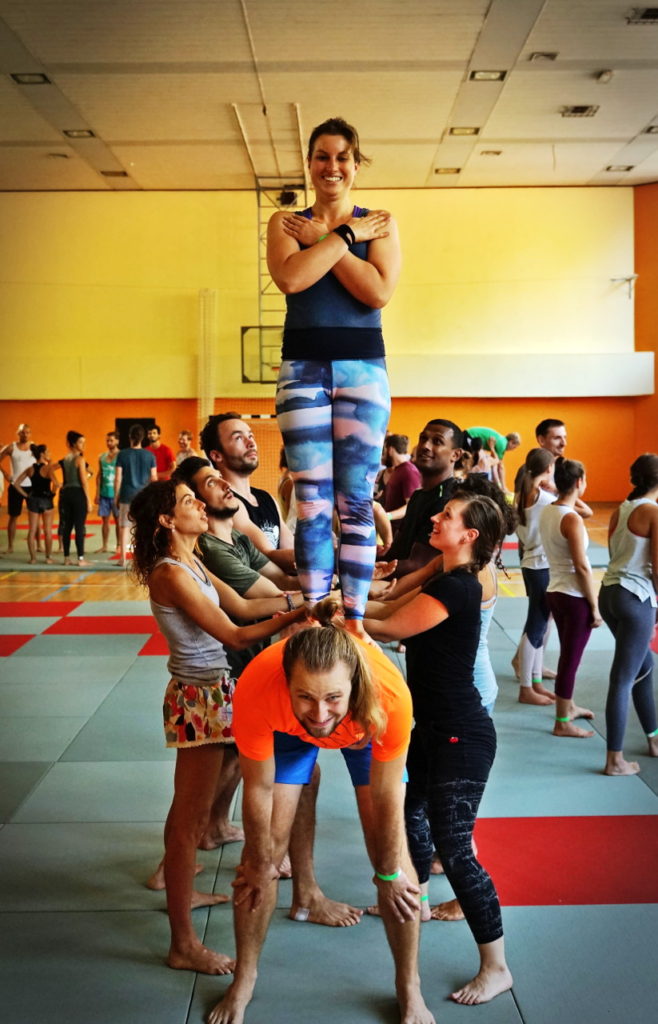
Physical contact and connection
Acroyoga is a contact activity. This is the very essence of acroyoga: We carry and lift each other up. Not only when things go well, but also when we fail: We use spotters who catches us when (and often even before) we fall. We push the limits of our comfort zone and what we thought was possible, supporting each other (physically and mentally) along the way. And we laugh and we are having fun while doing so.
And this is one of the important things that acroyoga is able to facilitate: To create connection.
We will just make a small detour to talk about the oxytocin, which for the last two decades have been in the public attention as being a catalyst for creating connection between people. It is a hormone that is released through (among other things) human contact (primarily hugging and similar touch). The science community is still working on uncovering the whole story, but they generally agree that there is a connection between oxytocin and human connection, bonding, and physical contact.
The topic is way too comprehensive to be discussed in depth here6, but if you find this interesting, then I would recommend watching Kelly McGonigal’s TED talk How to make stress your friend. Her primary message is that we should change how we perceive stress in our lives, but she also talks about how oxytocin is released as a stress response and how it helps rebuild the body and make it more resilient to stress in the future. And the beautiful thing is: The effects of oxytocin are enhanced by social contact and support.
I cannot help making a connection between this talk and acroyoga: We stress ourselves a bit (both physically and mentally) by pushing the limits of our comfort zone – and we do it with the help of our friends.
To me, the acroyoga community has been the most loving and open minded community I’ve met. I’m not saying it’s like that for everybody, but I’ve seen it happen in many of the acroyoga communities that I’ve met all over the world. When my parents were young, they were very active in the community of gymnastics and have often compared my acroyoga adventures to the Danish gymnastics tradition – both regarding the physical practise and the community side of it; the friendships, bonding, and connections. And it makes sense! The foundation of Danish gymnastics is a lot like the foundation of acroyoga: Physical exercises (tumbling) outside your comfort zone, along with the support from friends and instructors, who make sure that you get out alive (from a jump) if you can’t quite make it on your own yet.
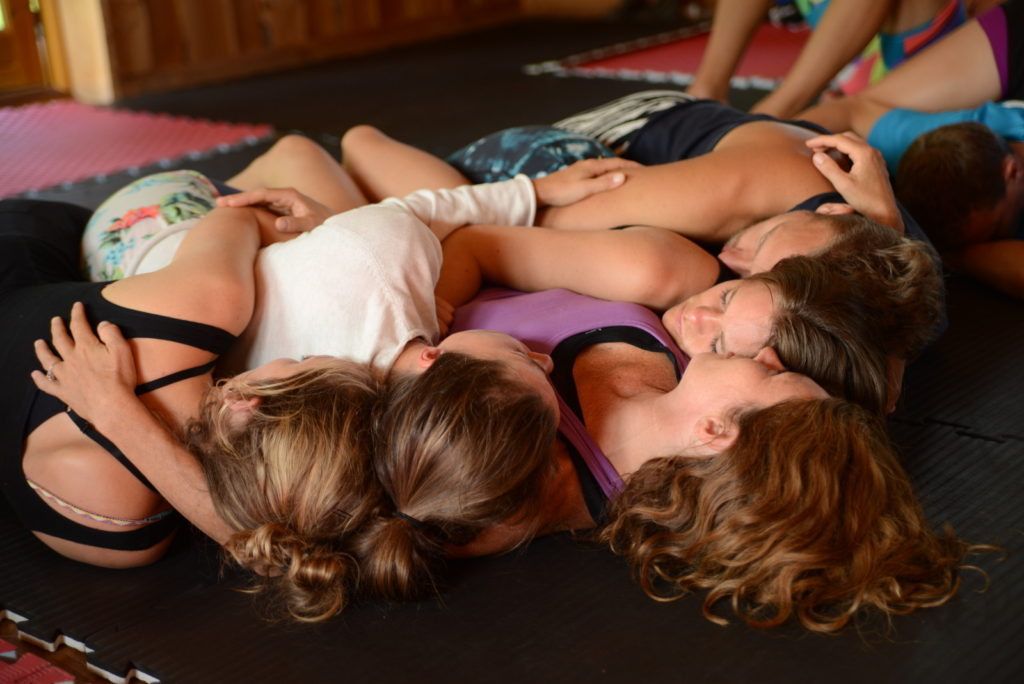
Where is the yoga?
If it’s difficult to define acroyoga, then I find defining yoga even more challenging. Going back to the roots, one will find that yoga is a way of life built on a foundation of 8 limbs7 and that everything you do in your life, should be done with the yoga philosophy in mind. In the western culture, however, we’ve had a tendency to take the physical practice (Asanas) out of its original context, and naming that part only as yoga. The aspects of ethics, morality, breathing, meditation etc. have then just been hidden behind the curtain and, sort of as a replacement, all sorts of props and (designer) clothing,8 that may or may not help you in your practice, have been introduced instead.
Where the yoga is in acroyoga is thus up to you as a practitioner. Are you in it for the fun and games and doing the acrobatics? Totally fine. That’s also where I started. Do you have a yoga background and would you like to incorporate the yoga poses in an acroyoga setting? Is it the partnership and flow that’s the most interesting to you? Or is it the yoga philosophy regarding personal development and mindfulness that you find inspiring?
Whatever you bring to the acroyoga practise and what you get out of it, is completely up to you. Take what you need in the moment and leave the rest behind. Play some games and have some fun. Take good care of yourself and those around you.
See you in the air.
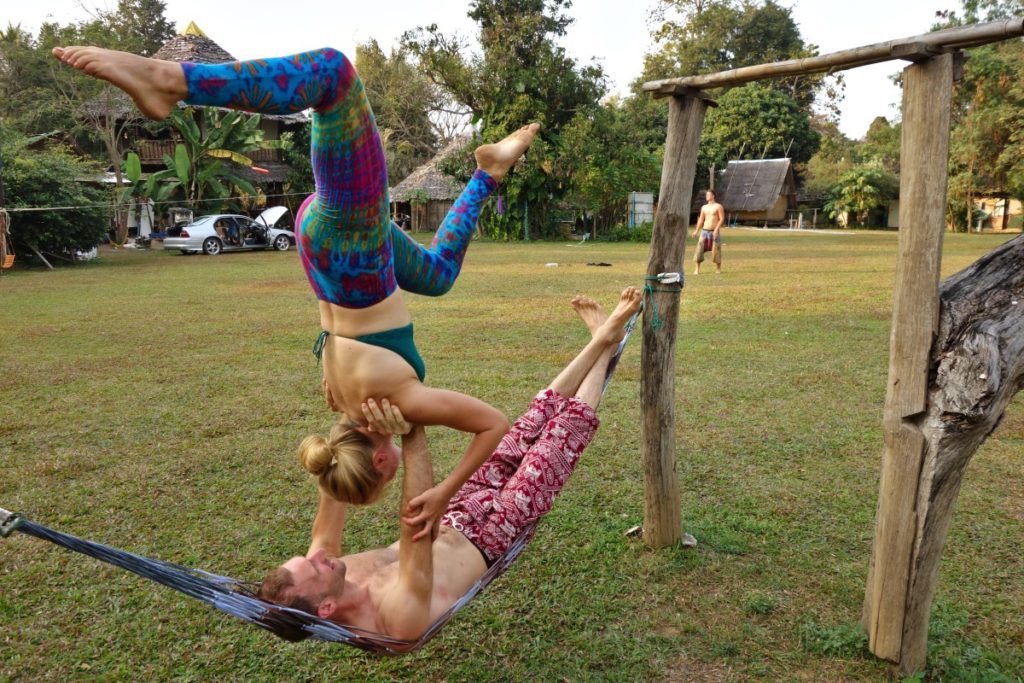
- Which is also the idea to show behind this series of blog posts ☺ ↩
- Often translated to, but in my world not quite the same as, tumbling. Rather, I would say that tumbling is a part of the Danish gymnastics tradition. ↩
- I do like the idea that it’s more important how your mindset is rather than what you are doing. But… my engineering mind objects and points out that then “Everything you do – from skateboarding to croquis drawing – can be called yoga” and it leaves me with a need to have some boxes in order to be able to describe what it is I actually do. That said, then I am totally fine with the concept of not needing to stay inside those boxes 😉 ↩
- My parents still tell me that what I do is “just gymnastics” which they were practising a lot when they were younger. I, clearly, do not agree 😉 ↩
- Akademiet for Utæmmet Kreativitet – loosely translated to The Academy of Untamed Creativity. Also, at the time of writing this, I believe their existence is not assured after January 1st, 2019. ↩
- The 4 major players that often are mentioned in this game are dopamin, oxytocin, serotonin and endorphins. One place to start could be this answer on Quora. ↩
-
The 8 limbs of yoga, here taken from Wikipedia:
- Yamas: A series of “right living” or ethical rules within Hinduism and Yoga.
- Niyamas: Positive duties or observances.
- Asanas: Postures in which a yoga practitioner sits.
- Pranayama: Breathing control and techniques.
- Pratyahara: The “withdrawal of the senses”.
- Dharana: Collection or concentration of the mind.
- Dhyana: Meditation.
- Samadhi: A reference to a state of meditative consciousness.
- I trust that you can find what I refer with a quick search on the internet 😉 ↩